In my childhood, western beats fascinated me. The sound of Kishore Kumar singing Mere saamne wali from Padosan would make me run to the radio. The ‘imagined’ sound of a comb on a broom in the song was fascinating. But, even more fascinating to my young ears was the sound of conga and drums that followed ‘baadal bhi garaj kar baras gaye’. As a child in the pre-teen years, the sound of bongos, conga or drums was exciting. They symbolized western, zestful and lively songs and not ‘slow or boring’ songs. And of course, the height of delight in my childhood was hearing the continuous roll of drums.
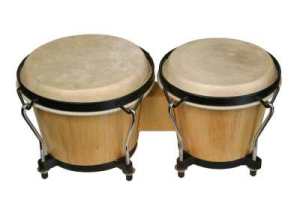
Bongo
As I grew up, I started appreciating the finer nuances and the delights of other genres and styles in film music beyond the childhood fascination with bongos/conga/drums. I also started admiring and appreciating songs that I had earlier dismissed as slow and boring!
In this post, I will try and share the joys of western percussion instruments like bongo, conga and drums. I have compiled a special list of 15 songs on the player for your enjoyment. Almost all Hindi films, of course have songs with bongo, conga or drums playing the rhythm. But, I compiled this special list of 15 songs applying the following criteria:
You should distinctly hear the bongo, conga or drums played as a lead instrument for at least a few seconds, in some part of the song,
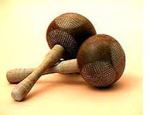
Maracas
Here are a couple of examples of what I mean by lead instrument. (Normally, when rhythm instruments like bongo, conga are played as a lead instrument, they also have some backup rhythm that is normally played along with them on the banjo/guitar/maracas. Even for a few seconds, if you hear only rhythm and backup rhythm instruments playing and nothing else, I am calling it a lead performance by bongo, conga or drums).
Listen to the beats of bongo for 10 seconds from Raat ka samaa (Ziddi) by clicking the arrow below. (Bongo has a sharper sound than the Conga).
and
Listen to the superb beats of conga for about 15 seconds from Aaya hoon main tujhko (Manoranjan) below (backup rhythm by maracas).
I have also limited myself to selecting hindi film songs from the 1950s to the 1970s (with one song from 1980). This commentary therefore excludes the wonderful work of A R Rahman and the famous percussionist Sivamani, who played a lot for A R Rahman. A R Rahman is known for his heavy use of percussion (both literally and figuratively). Sivamani, a versatile talent on percussion, is known to play on anything he can lay his hands on (including a carton or bucket or anything else that is handy!). I may explore A R Rahman’s music in a later post. I use the term western percussion to include primarily bongo, conga and drums. These instruments had origins in Latin America, Cuba, Europe and parts of Africa.
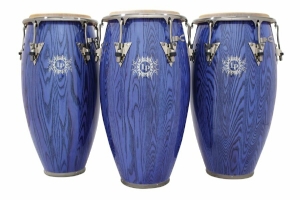
Conga
Enjoy some of these songs in the playlist below.
If you are in the USA or Canada, you can also enjoy these songs on the player below. On repeated plays, the player automatically shuffles songs.
A tip to enhance your enjoyment of these songs
(The player stops playing when you click the back button or go to another link on this page or somewhere else. This happens because the player is embedded on this page. To listen to these songs without any break, open another window after clicking the play arrow on the player. If you want to browse further on this site or another site, use the newly opened window. The player will keep playing the songs as you browse in the new window).
Early beats
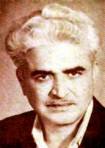
The stalwarts of the golden era (1950s and 60s) mastered western styles as well as the use of western instruments including percussion instruments. C Ramchandra, the maverick composer used the conga, bongo beautifully as lead instruments in Albela in songs like Deewana Parwana. Naushad also made lovely use of western percussion in movies like Jadoo.
S D Burman, known for creating ‘light’ music, uses the bongos beautifully as lead instruments in the delightful classic Sar jo tera chakraye (Pyaasa) to accompany the visuals of the ‘maalish’.
Shanker-Jaikishen who used Jazz and other western styles extensively have a lengthy prelude with a lovely conga piece in Sukku Sukku (Junglee). Ravi, known for his soothing and simple melodies, showed he is also a master of western instruments, including the drums in the lead in Zindagi ittefaq hai (Aadmi aur Insaan). Usha Khanna, who made her debut with Dil deke dekho featured the roll of drums as the lead instrument in the title song. Interestingly, this song has drums, bongo and also tabla at various stages.
Some of the golden era stalwarts who continued to enjoy popularity in the 70s as well used western percussion effectively in the 70s. S D Burman had a delightful little bongo piece in Choodi nahin hai mera (Gambler) and Madan Mohan had solo drums playing in Tum jo mil gaye ho (Hanste Zakhm).
Cawas Lord was the pioneering musician in Hindi films for western percussion. He used bongos and other percussion instruments extensively. His sons Burjor and Kersi Lord also mastered percussion instruments. Kersi Lord went on to became a famous arranger and musician, who introduced novel arrangements and new types of instruments and sounds in film music.
Pancham’s beats

R D Burman, created waves in Teesri Manzil with his trendsetting mix of rock and jazz styles. During his early years as a composer, R D Burman carried a strong image of being ‘western’ in his music. A number of his songs feature lovely use of bongos, conga and drums as lead instruments. Who can forget the silhouetted image of ‘Rocky’ Shammi Kapoor playing the drums in O haseena zulfon wali in Teesri Manzil? (The actor ‘behind the curtain’ who played the drums during the shooting for this song was Leslie Godinho, the drummer from Pancham’s orchestra who played the drums we hear in the song). Another early movie of Pancham, The Train features lovely bongos in Gulabi Aankhen.
The 70s saw the introduction of larger orchestras and more instruments (also louder!). Yaadon ki baraat, a super hit in the early 70s had O meri soni that had the roll of bongos that accompanied the visuals of rocks falling on the hillside (the roll you hear after the gasp by Asha Bhonsle was created using bongos as the main instrument). Though this song has only a fleeting roll of the bongos, it highlights the importance Pancham attached to western percussion.
Perhaps the best use of conga as a lead instrument by Pancham is in the Middle eastern music based song Aaya hun main tujhko (Manoranjan). This song has delightful and lengthy beats at 3 different places in the song, including a complex 32 matra pattern played by Maruti Rao Keer. I would rate this song as Pancham’s best in terms of complexity of the beat patterns, the skill involved in playing and our enjoyment of the beats.
Babla’s beats
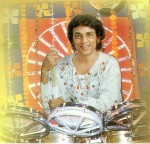
Apart from R D Burman, who mastered western styles and orchestration, Kalyanji-Anandji also demonstrated mastery and sophisticated use of western instruments. Babla, the younger brother of the duo Kalyanji and Anandji was a child prodigy and a wizard in western percussion. As their assistant from late 60s, Babla managed the rhythm section in most of their songs, often playing percussion instruments himself as the lead performer.
The hugely popular Husn ke lakhon rang (Johny mera naam) features bongos as a lead instrument that play in tandem with trumpet and other instruments to gradually build up the tempo in the song. A similar song, Dil jalon ka (Zanjeer) features lovely roll of bongos. Babla also played the conga delightfully in Do bechare (Victoria no 203).
Babla introduced new types of percussion instruments in film music. He introduced roto drums in Muqaddar ka Sikandar in the song Pyaar zindagi hai and in Laila o Laila (Qurbani) he played them himself. Though the visuals in the movie show Amjad Khan playing on a normal set of drums, the song actually uses roto drums. I am sure Babla’s amazing beats in this lead performance along with conga will have everyone tapping their feet! Babla also introduced Laali, a new instrument from Fiji in the super hit Yeh mera dil (Don).
Innovative beats
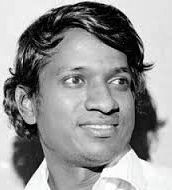
You may be wondering what could be innovative in using bongos, conga and the drums. Plenty for creative minds like Naushad! Naushad departed from his usual classical and folk based style in Saathi. Saathi saw Naushad use western music styles and concepts like counterpoint beautifully. Kersi Lord (who did his initial work mostly for Naushad) explained how they used bongo and conga in tandem with the South Indian percussion instrument Mridangam in Saathi for an innovative and different type of western beat. Listen to these delightful beats in Mera pyaar bhi tu hai (by clicking the arrow below). You can hear these innovative beats throughout the vocal melody sung by Suman Kalyanpur and Mukesh. I must admit that there is no lead performance by rhythm in this song. I included it only to demonstrate innovation in western beats.
instrument Mridangam in Saathi for an innovative and different type of western beat. Listen to these delightful beats in Mera pyaar bhi tu hai (by clicking the arrow below). You can hear these innovative beats throughout the vocal melody sung by Suman Kalyanpur and Mukesh. I must admit that there is no lead performance by rhythm in this song. I included it only to demonstrate innovation in western beats.
The music of Ilayaraja, the genius from South India, defies description. Almost every song of Ilayaraja has something new. It is only Ilayaraja’s genius that can come up with a superb piece of innovation using western percussion instruments. Listen carefully to the Telugu dance song Raja Rajadhi Raja (Gharshana). Telugu is the language spoken in the new state of Telangana and the residuary state of Andhra Pradesh. It does not matter whether you understand a South Indian language or not. If you observe, you will notice that throughout the prelude and the interludes, Ilayaraja used only western beats and nothing else! It is very unusual indeed to find that there are no instruments at all other than western beats. In fact, Ilayaraja also uses chorus to simulate western beats and other instruments! This is truly the hallmark of a genius. Ilayaraja also demonstrates in this song that you need creativity, rhythm and melody to create a great dance number. You do not need heavy thumping beats, loud music or high-pitched vocals for a dance song! Observe the innovation and enjoy this song by clicking the arrow below.
If you can listen to any music without language barriers, you will enjoy other innovative songs from Ilayaraja in my post, Hits of Ilayaraja, innovation.
The western beats are always a joy in most of the songs. But when you have songs that have a distinct and special place for western beats, it adds a special dimension to our enjoyment of the beats and songs.
Ravi,
Hats off! This is a fantastic post. Instruments and the men behind them, whose contribution is so important in making the songs so enjoyable, remain unsung themselves. A very knowledgeable piece you have written.
AK
Thanks a lot AK….I am glad you liked it. Yes, there are many skillful and talented musicians behind each instrument that you hear and enjoy in film songs. They played a huge role in making the film songs so popular in India and overseas.
Hats off Ravi, never ever has some one glorified the talented men behind this Rhythmical Journey
with such Precise knowledge on percussions and other rhythmical instruments. Congrats n I honor you with the Title ” The Rhythm King” on behalf of Kalyanji Anandji and Babla….Dinesh shah
Thank you Dinesh bhai for your kind words. Your father Kalyanji bhai and your uncles had immense talent and it is an honor and privilege to write about their talent, skills and achievements.
Please note that one best song for bongo-kongo rythem of Farz – ‘tuhmse o hasina kabhi muhobbat na maine karni thi’ is missing in your above list, so it will be good if you add the same
Thank you MukeshJi for highlighting the song from Farz. It appears that you have an extensive knowledge of film music; perhaps you should have a blog of your own. Since most lists are based on an individual’s liking, it is possible that your lists may be totally different from others – and provide additional insights and enjoyment for your readers. Wish you all the best!
very nicely elaborated, excellent